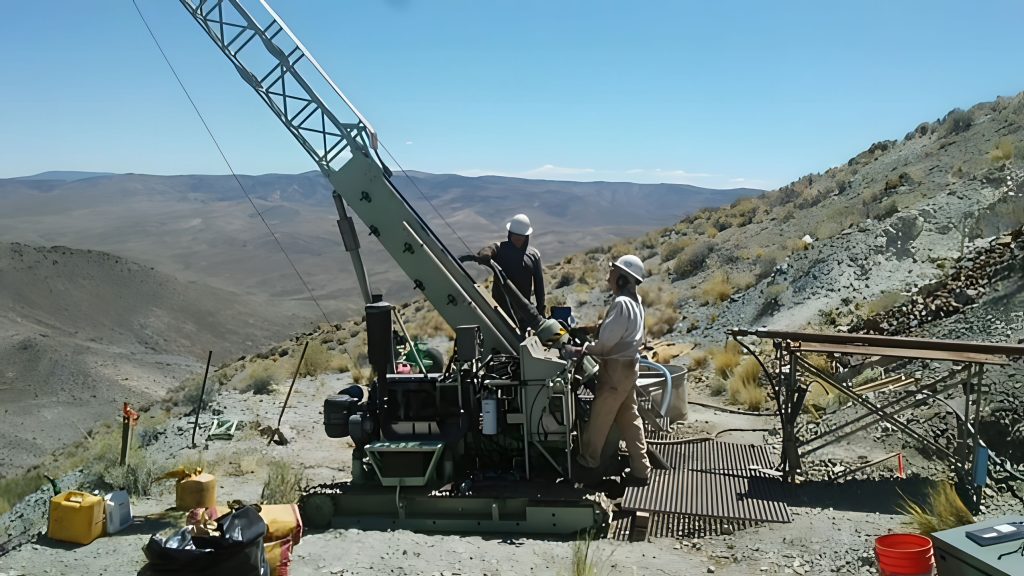Sky Gold receives Evening Star Copper-Gold Porphyry Project drill permits, Nevada

Sky Gold Corp. [TSXV: SKYG; US: SRKZF] reported has received its NOI level permits from the US Bureau of Land Management to drill its Evening Star Copper-Gold property in Mineral County, Nevada.
The road accessible, 1,450-acre (586 hectare) property is located about 10 miles (16 km) east of Hawthorne, Nevada, in the prolific Walker Lane Trend and about 52 miles (83 km) southeast of the Yerington, Nevada porphyry copper deposit. The Evening Star property is in the Pamlico Mining district which has a history of exploration for base metal skarn and carbonate-replacement prospects.
The most recent exploration work by Sky Gold geologists suggests that there is a possibility for an undiscovered porphyry copper-gold deposit as well as a separate intrusion-hosted gold deposit.
“While we await assay results from our Shebandowan Nickel Copper Gold project in Ontario, we are excited to get a long-awaited drill program organized for our now permitted Evening Star project in Nevada. Our copper and gold targets have been carefully selected after years of work in a hot area of Nevada and with the surge in commodity prices sparking a renewed interest in the junior mining exploration space there is no time like the present to get drilling!” stated Mike England, CEO of Sky Gold.
Sky Gold’s upcoming drill program at its Evening Star property will test the “Highlife Copper” porphyry/skarn copper target and the “Tower Gold” intrusion-hosted gold target. The 3,500-foot (1,060 metres) drill program will consist of two holes at Highlife and three holes at Tower Gold.
At the Highlife Copper target, a +1000 foot (304 meters) long copper-in-soil anomaly overlies bedrock of altered quartz monzonite porphyry dikes that intruded a biotite-rich granodiorite. Samples of the porphyry dikes exposed in road cuts and old prospect pits contain up to 1.54% copper and 0.159 ppm gold.
The quartz monzonite porphyry dikes exhibit pervasive quartz-sericite-pyrite alteration (QSP) and is possibly the “phyllic” alteration zone found in/with porphyry copper-gold systems. The drilling program is designed to test for a deeper “potassic” alteration zone, where if present, copper-gold mineralization is likely to be the strongest.
Also, a ground-based magnetic “high” anomaly is coincident with the Highlife Geochem anomaly. This suggests that the deeper, richer part(s) of a copper-porphyry system may lie below the mineralized altered quartz monzonite porphyry exposed at the surface.
At the Yerington, Nevada porphyry copper deposit 52 miles (83 km) to the northwest, the copper ore is related to the potassic alteration zone. Yerington has produced over 1.75 billion pounds of copper (793 million Kg).
At the Tower Gold target several holes are planned to test a +3,000-foot (914 metres) long by up to 300-foot (91 metres) wide zone of anomalous gold in soil and bedrock. The target area is an intrusion-hosted zone(s) of shallowly-dipping, gold-bearing quartz veins marked by old prospect pits, trenches and declines. Rock samples of the limonitic quartz veins and altered granitoid host rocks returned up to 18.21 ppm gold and 1.16% copper.
Soil samples contain up to 2.83 ppm gold and 930 ppm copper. The Tower Gold mineralized zone has been traced for approximately 1.5 km along the surface and bedrock sampling suggests it may be 160 feet (50 meters) or more in width. Tower Gold may be a distal gold system to a porphyry copper deposit or another event of the Walker Lane trend.
